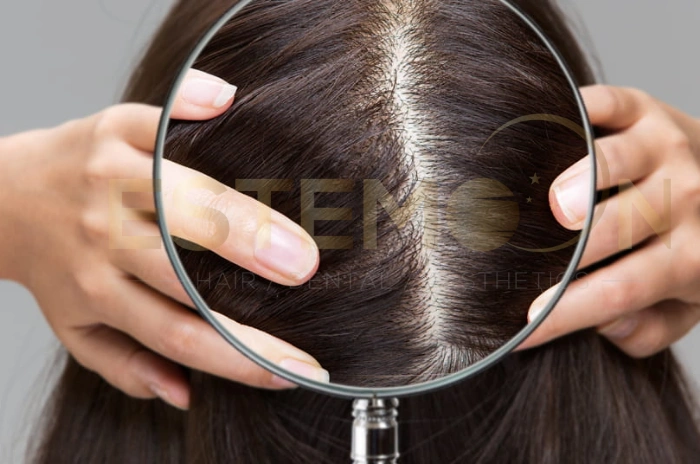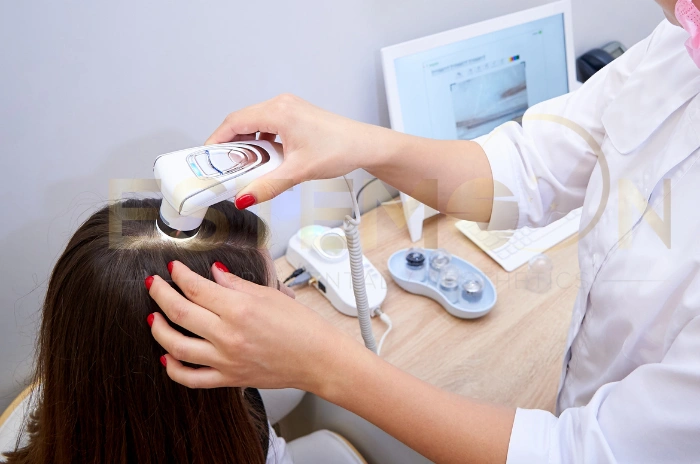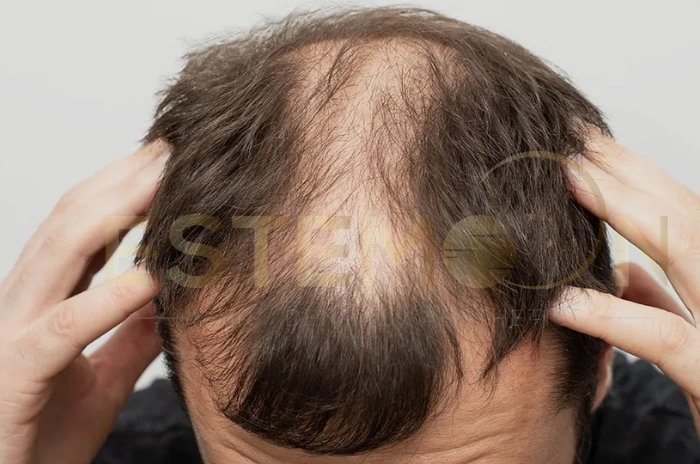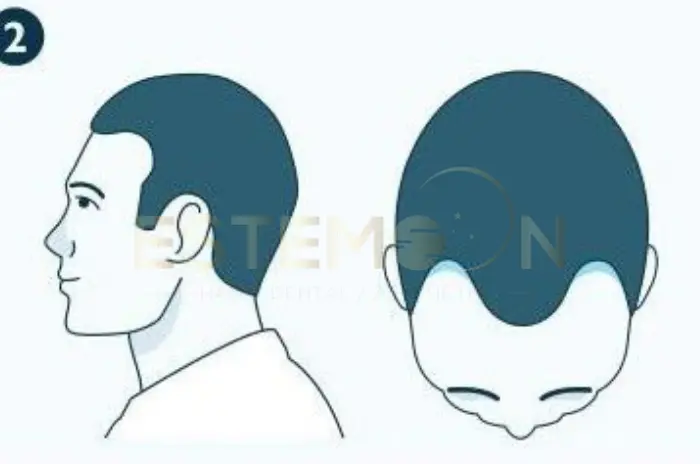The hair loss industry trends landscape is experiencing unprecedented transformation in 2025. With millions of people worldwide seeking effective solutions for hair loss, the market has evolved from traditional treatments to innovative technologies and personalized approaches. Understanding current hair loss market trends 2025 is crucial for consumers, healthcare providers, and industry professionals alike.
This comprehensive analysis explores the most significant developments shaping the global hair loss market size and future treatment options. From breakthrough biotech innovations to wellness-focused approaches, these trends reflect changing consumer preferences and advancing scientific understanding of hair loss mechanisms.

Introduction to the Global Hair Loss Market
Why Hair Loss Trends Matter in 2025
The importance of tracking hair loss industry statistics has never been greater. Consumer awareness about hair health has reached new heights, driving demand for evidence-based treatments and transparent product information. Social media influence and celebrity endorsements have accelerated market growth, while scientific breakthroughs continue to expand treatment possibilities.
Modern consumers are increasingly educated about hair loss causes and solutions. They demand products that align with their lifestyle choices, whether seeking natural DHT blockers or advanced medical interventions. This informed consumer base is reshaping how companies develop and market hair loss solutions.
The integration of technology with traditional treatments has created new market segments. AI hair diagnostics and personalized hair loss treatment options are becoming standard offerings rather than premium services. This shift reflects broader healthcare trends toward individualized medicine and preventive care approaches.
Market Size and Projected Growth
The global hair growth market forecast indicates robust expansion through 2030. Current market valuations exceed $4.2 billion globally, with projected compound annual growth rates of 8.5% to 12% depending on market segments. North America and Europe continue leading market share, while Asia-Pacific regions show the fastest growth rates.
| Market Segment | 2024 Market Size | Projected CAGR | 2030 Forecast |
|---|---|---|---|
| Hair Loss Medications | $1.8 billion | 9.2% | $3.1 billion |
| Hair Transplant Procedures | $1.2 billion | 12.5% | $2.4 billion |
| Hair Growth Devices | $650 million | 15.3% | $1.5 billion |
| Supplements & Topicals | $980 million | 8.8% | $1.6 billion |
| Hair Replacement Systems | $420 million | 11.7% | $830 million |
Hair loss market size expansion is driven by multiple factors including aging populations, increased stress levels, and growing acceptance of cosmetic treatments among men. The market encompasses prescription medications, over-the-counter products, surgical procedures, and emerging technologies like stem cell hair regeneration.
Investment in research and development has increased dramatically. Major pharmaceutical companies are allocating significant resources to hair loss research, while startup companies focus on innovative delivery methods and biotin collagen hair supplement trends. This increased funding accelerates the pace of innovation and brings new solutions to market faster.
Non-Surgical Alternatives Rising
Growth of Adhesive Hair Replacement Systems
Hair replacement systems have evolved significantly beyond traditional methods. Modern adhesive systems offer superior comfort, durability, and natural appearance compared to previous generations. These systems now feature medical-grade adhesives that can withstand daily activities including swimming and exercise.
The technology behind attachment methods has improved dramatically. New polyurethane and lace base materials provide better breathability and skin compatibility. Manufacturers are developing systems that can remain securely attached for weeks while maintaining natural movement and styling flexibility.
Professional application services are expanding to meet growing demand. Specialized salons and mobile services now offer installation, maintenance, and styling for hair replacement systems. This service expansion makes non-surgical hair loss solutions more accessible to consumers who previously considered only surgical options.
Glueless Wigs and Secondary Hair Market Worth Billions
The glueless wig segment represents one of the fastest-growing areas within hair loss market trends. These systems eliminate the need for adhesives while providing secure, comfortable wear. Advanced construction techniques using adjustable straps, combs, and elastic bands create stable foundations without chemical bonding agents.
Market research indicates the secondary hair market, including wigs and extensions, now exceeds $2.8 billion annually. This growth reflects changing attitudes toward hair as a fashion accessory rather than purely a medical necessity. Celebrity influence and social media trends have normalized wig wearing across all demographics.
Innovation in wig construction includes hand-tied caps, monofilament tops, and hybrid ventilation techniques. These advances create more realistic hairlines and parting options. Manufacturers are also developing lighter-weight materials that reduce fatigue during extended wear while maintaining durability.
Treatment Innovation & Biotech
Hair Cloning and Stem Cell Research Status
Hair cloning research has progressed significantly, with several clinical trials showing promising results. Companies like Stemson Therapeutics and Tsuji Laboratory are advancing follicle regeneration techniques using induced pluripotent stem cells. While commercial availability remains years away, proof-of-concept studies demonstrate the technology’s potential.
Stem cell hair growth treatments using adipose-derived stem cells are now available in select markets. These procedures extract fat tissue, process it to concentrate stem cells, and inject them into affected scalp areas. Early results suggest improved hair density and thickness, though long-term efficacy data is still being collected.
The regulatory landscape for stem cell treatments varies globally. Some countries allow experimental procedures under compassionate use programs, while others maintain stricter approval requirements. This regulatory variation affects treatment availability and research funding allocation across different markets.
Investigational Drugs and New Hair Loss Drugs
New hair loss drugs in development target novel pathways beyond traditional DHT inhibition. Oral spironolactone is gaining attention for androgenetic alopecia treatment, particularly in women. Clinical studies show comparable efficacy to finasteride with different side effect profiles, expanding treatment options for patients who cannot tolerate traditional medications.
| Drug/Treatment | Development Stage | Target Condition | Expected Timeline |
|---|---|---|---|
| Baricitinib (Olumiant) | FDA Approved | Alopecia Areata | Available now |
| Oral Spironolactone | Clinical Studies | Androgenetic Alopecia | 2025-2026 |
| SM04554 (Samumed) | Phase III Trials | Male Pattern Baldness | 2026-2027 |
| Peptide Complexes | Phase II Studies | Various Hair Loss Types | 2025-2028 |
| JAK Inhibitor Topicals | Development | Alopecia Areata | 2026-2027 |
Baricitinib represents a breakthrough for alopecia areata treatment. This JAK inhibitor has shown remarkable results in clinical trials, with some patients experiencing complete hair regrowth. The FDA approval for severe alopecia areata marks the first significant new treatment option for this condition in decades.
Research into peptide hair products focuses on growth factors and signaling molecules that stimulate follicle activity. Topical formulations containing copper peptides, growth hormone peptides, and adenosine show promise in early studies. These products offer potentially milder alternatives to pharmaceutical treatments with fewer systemic effects.
Peptide-Infused Topical Products and Microbiome Innovations
The scalp microbiome’s role in hair health is gaining scientific recognition. Research indicates that beneficial bacteria support healthy hair growth while harmful microorganisms may contribute to hair loss. This understanding is driving development of probiotic hair care products and microbiome-supporting treatments.
Peptide technology has advanced beyond simple copper peptides to include complex growth factor combinations. These peptide-infused topical products aim to recreate the natural signaling environment that promotes hair growth. Encapsulation technologies improve peptide stability and skin penetration, enhancing treatment effectiveness.
Combination therapies incorporating peptides with established treatments show enhanced results. Products combining peptides with minoxidil, tretinoin, or natural extracts like rosemary oil vs minoxidil comparisons demonstrate improved efficacy over single-ingredient formulations. This trend toward multi-modal approaches reflects better understanding of hair loss complexity.

Focus on Scalp Health & Wellness
Scalp Filters and Hydration Trends
Water quality’s impact on hair and scalp health has become a major consumer concern. Products like the Jolie filter address chlorine, heavy metals, and other contaminants that may damage hair follicles. These filtration systems represent the intersection of environmental awareness and hair health optimization.
Scalp health shampoo ingredients now emphasize gentle cleansing with beneficial additives. Formulations include prebiotics to support healthy microbiomes, antioxidants to combat environmental damage, and moisturizing agents to maintain optimal scalp hydration. The trend moves away from harsh sulfates toward amino acid-based cleansers.
Hydration-focused treatments extend beyond traditional moisturizers to include hyaluronic acid serums, ceramide treatments, and barrier repair complexes. These products address scalp dryness that may contribute to hair loss while creating optimal conditions for healthy hair growth.
Consumers Prioritizing Prevention and Wellness
The shift toward preventive care represents a fundamental change in consumer behavior. Rather than waiting for significant hair loss to occur, consumers are adopting proactive approaches that include vegan hair growth supplements, stress management, and lifestyle modifications that support hair health.
Nutrition’s role in hair health drives demand for targeted supplementation. Biotin collagen hair supplement trends show consumers seeking comprehensive formulations that address multiple nutritional factors. Products now include adaptogens for stress management, omega-3 fatty acids for inflammation control, and trace minerals essential for hair growth.
Holistic wellness approaches integrate traditional treatments with lifestyle modifications. Consumers combine topical treatments with meditation, exercise, improved sleep habits, and dietary changes. This comprehensive approach reflects growing understanding that hair health depends on overall physical and mental well-being.
Devices & Adjunct Therapies
Growth of LLLT/Laser Kits and Microneedling Combos
LLLT devices for hair growth have become more sophisticated and user-friendly. Home-use devices now offer clinical-grade wavelengths and power outputs previously available only in professional settings. The at-home laser cap for hair growth market has expanded to include various form factors including combs, bands, and helmets.
Microneedling for hair loss has gained significant traction as both standalone and combination therapy. Devices specifically designed for scalp use feature optimal needle lengths and patterns for follicle stimulation. Research supports microneedling’s ability to enhance topical treatment absorption and stimulate natural growth factors.
Combination protocols using LLLT and microneedling show synergistic effects. Treatment schedules alternating these modalities optimize stimulation while allowing adequate recovery time. Professional protocols are being adapted for home use, making combined therapy more accessible to consumers.
Supplements, Vitamins and Device-Based Wellness Routines
The hair growth supplements market has evolved toward comprehensive formulations addressing multiple pathways. Modern supplements combine traditional ingredients like biotin and iron with newer compounds like saw palmetto, ashwagandha, and marine collagen. These complex formulations target hormonal balance, stress response, and nutritional status.
Device-based wellness routines integrate multiple treatment modalities into structured programs. Consumers follow schedules combining supplementation, topical treatments, device therapy, and lifestyle modifications. Mobile apps now track compliance and progress, making complex routines more manageable.
Evidence-based supplement formulation has become a market differentiator. Companies invest in clinical studies to validate ingredient combinations and dosing protocols. This scientific approach builds consumer confidence and supports higher price points for premium formulations.
Market Business Models & Pricing
Subscription Services for Products and Filters
Subscription models have transformed hair loss treatment accessibility and compliance. Companies offer monthly deliveries of treatments, supplements, and replacement devices, ensuring consistent product availability. These models often include telemedicine consultations and progress monitoring services.
Filter subscription services address water quality concerns with regular replacement schedules. Companies like Jolie have built business models around ongoing filter replacement rather than one-time device sales. This approach ensures optimal performance while creating predictable revenue streams.
Telehealth vs clinics competition has intensified pricing pressure while improving access. Online platforms offer competitive pricing for prescription medications and professional consultations. Traditional clinics respond by enhancing service offerings and emphasizing personalized care advantages.
Pricing Trends and Competitive Offers
Market competition has driven significant pricing innovations. Companies offer risk-free trials, money-back guarantees, and graduated pricing based on treatment duration. Bundle pricing for combined treatments provides cost savings while encouraging comprehensive approaches.
| Treatment Type | Average Cost Range | Market Trend |
|---|---|---|
| PRP Therapy for Hair Loss | $300-800 per session | 25% price decrease |
| At-Home Laser Devices | $200-2,500 | Increasing affordability |
| Hair Transplant (per graft) | $3-8 | Regional price variation |
| Monthly Supplement Plans | $30-150 | Subscription discounts |
| Topical Treatments | $25-200 | Generic competition |
PRP therapy for hair loss cost has decreased as the procedure becomes more widely available. Competition among providers and improved efficiency in processing techniques have made PRP treatments more accessible. Some clinics now offer package deals combining PRP with other treatments.
Insurance coverage for hair loss treatments remains limited, driving demand for affordable options. Companies develop payment plans and financing options to make treatments accessible. Generic medication availability has also reduced costs for traditional pharmaceutical treatments.

Scalp Health & Clean Formulations
Peptide-Infused Shampoos and Wellness-Driven Routines
Scalp health trends emphasize the foundation that healthy scalp conditions provide for optimal hair growth. Peptide-infused shampoos now incorporate growth factors, antioxidants, and anti-inflammatory compounds that address scalp health at the cellular level. These formulations move beyond basic cleansing to provide therapeutic benefits.
Wellness-driven routines integrate scalp care with overall health practices. Consumers adopt comprehensive approaches that include scalp massage, aromatherapy, stress reduction techniques, and environmental toxin reduction. These holistic methods reflect growing awareness of the mind-body connection in hair health.
Professional scalp treatments have expanded beyond traditional hair salons to include medical spas and dermatology clinics. These facilities offer advanced treatments like scalp facials, LED therapy, and professional-grade peptide applications. The medicalization of scalp care validates its importance in hair loss prevention and treatment.
Eco-Conscious and Gentle Treatment Formulations
Clean beauty hair loss products address growing consumer concerns about ingredient safety and environmental impact. Formulations emphasize plant-based actives, biodegradable ingredients, and sustainable packaging. This trend reflects broader consumer values while maintaining treatment efficacy.
Gentle formulation approaches recognize that harsh treatments may contribute to scalp irritation and hair loss. Products now feature pH-balanced formulations, minimal processing, and biocompatible ingredients that work with natural scalp ecology rather than disrupting it.
Transparency in ingredient sourcing and manufacturing has become a competitive advantage. Companies provide detailed information about ingredient origins, processing methods, and quality testing. This transparency builds consumer trust and supports premium pricing for high-quality formulations.
Future Innovation: Personalization & Biotech
AI, DNA-Coded Personalization, and Exosomes
AI hair diagnostics represent the cutting edge of personalized treatment. Machine learning algorithms analyze photos, genetic information, hormonal profiles, and lifestyle factors to recommend optimal treatment protocols. These systems continuously learn from treatment outcomes to improve recommendation accuracy.
DNA-coded personalization examines genetic variants associated with hair loss susceptibility, medication metabolism, and nutrient requirements. This information guides treatment selection and dosing while identifying individuals who may benefit from preventive interventions before significant hair loss occurs.
Exosomes hair growth research explores these cellular communication vesicles’ potential for follicle regeneration. Exosomes derived from stem cells or follicle cells may deliver growth signals and genetic material to dormant follicles. Early research suggests significant potential, though clinical applications remain developmental.
Stem Cell & mRNA Therapies, Wearable Technologies
Stem cell hair regeneration continues advancing with improved cell processing and delivery methods. Autologous treatments using patients’ own stem cells avoid immune rejection while providing personalized regenerative potential. Combined approaches using stem cells with growth factors and scaffolding materials show enhanced results.
mRNA therapy applications for hair loss explore possibilities for temporarily modifying follicle cell behavior. These treatments could potentially extend growth phases, reduce sensitivity to DHT, or enhance follicle stem cell activity. While still experimental, mRNA technology’s success in other medical applications suggests promising potential.
Wearable hair technology includes devices that monitor scalp conditions, deliver treatments, and track progress. Smart caps can provide controlled LED therapy, monitor scalp temperature and humidity, and even deliver topical medications on programmed schedules. These devices represent the convergence of hair care with digital health monitoring.
Adaptive scalp diagnostics use sensors to continuously monitor scalp health parameters including moisture levels, sebum production, inflammation markers, and hair growth rates. This real-time data enables treatment adjustments and early intervention when negative changes are detected.
FAQs About Top 10 Hair Loss Market Trends You Should Know
What is the current market size and projected growth for the global hair loss industry?
The global hair loss market exceeds $4.2 billion with projected compound annual growth rates of 8.5% to 12% through 2030, driven by aging populations and increased treatment acceptance.
What are the emerging non-surgical alternatives gaining popularity in the hair loss market?
Glueless wig systems and advanced adhesive hair replacement systems worth billions are rising, offering comfortable, natural-looking alternatives without surgical intervention.
What are the latest innovations in biotech for hair loss treatment, including research and new drugs?
Hair cloning research, stem cell therapies, JAK inhibitors like baricitinib for alopecia areata, and peptide-infused products represent major biotech advances in development.
How is scalp health and wellness becoming a key trend in the hair loss market?
Consumers prioritize prevention through scalp filters, microbiome-supporting products, and holistic wellness approaches that address underlying health factors affecting hair growth.
What devices and adjunct therapies are increasingly being used for hair growth?
At-home laser caps, microneedling devices, LLLT systems, and comprehensive supplement regimens are becoming standard components of modern hair loss treatment protocols.
What business models and pricing strategies are trending in the hair loss market?
Subscription services for products and filters, telehealth platforms, bundle pricing, and risk-free trial offers are making treatments more accessible and affordable.
How are personalization and advanced biotech shaping the future of hair loss innovation?
AI diagnostics, DNA-coded treatments, exosome therapy, mRNA applications, and wearable monitoring technologies are creating truly personalized hair loss solutions.
Why is it important to understand current hair loss trends in 2025?
Understanding trends helps consumers make informed treatment decisions, enables healthcare providers to offer current options, and guides industry professionals in developing effective solutions.
Follow us on social media for updates, tips, and patient success stories:




